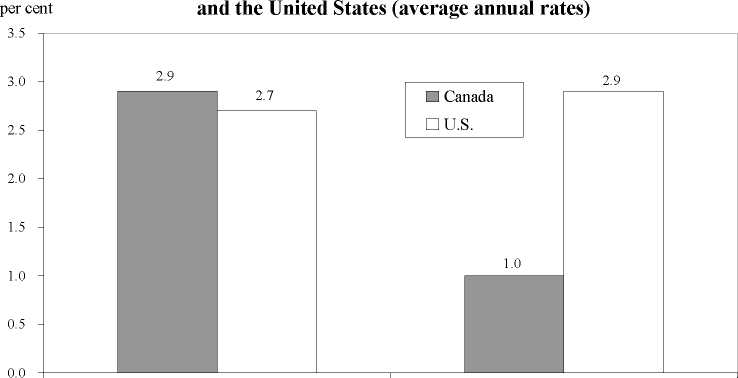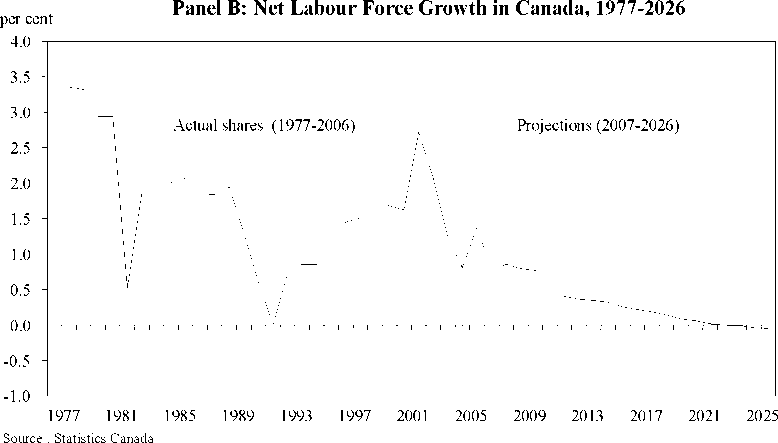19
In addition to the inflationary implications, falling labour force growth will mean that a
smaller share of the population will be employed and hence able to support the non-employed
through taxes. The rising dependency ratio, particularly in relation to health spending, has
important implications for the fiscal position of governments.
In the short to medium term, labour force growth varies with the business cycle, falling in
recession and rising in expansions. From a longer term perspective, labour force growth is
determined by the demographic structure of the population and net international migration. The
imminent retirement of the baby boom cohorts will see labour force growth fall from its current
level of around 200,000 per year to zero over the next 15 years (Panel B).
Panel A: Business Sector Output per Hour Growth in Canada

96-00 00-06
Source : CSLS Productivity Database

The labour force participation rate is directly related to the level of educational
attainment of the population. The more education one has the more one participates in the labour
market as one has more employment opportunities and greater earnings potential. Increasing the
More intriguing information
1. The name is absent2. The name is absent
3. PROTECTING CONTRACT GROWERS OF BROILER CHICKEN INDUSTRY
4. The name is absent
5. The Values and Character Dispositions of 14-16 Year Olds in the Hodge Hill Constituency
6. The name is absent
7. Industrial districts, innovation and I-district effect: territory or industrial specialization?
8. CGE modelling of the resources boom in Indonesia and Australia using TERM
9. Macro-regional evaluation of the Structural Funds using the HERMIN modelling framework
10. Non-farm businesses local economic integration level: the case of six Portuguese small and medium-sized Markettowns• - a sector approach